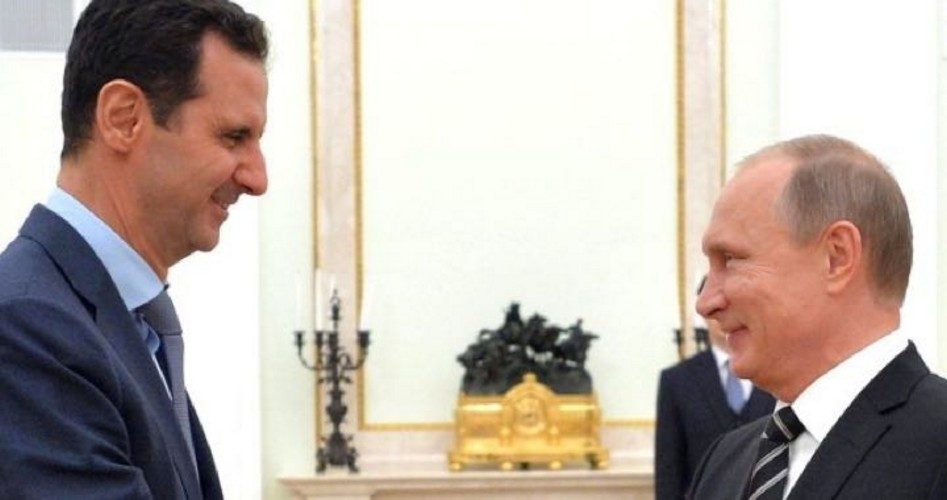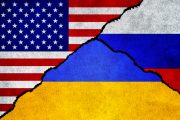
The U.S.-backed Syrian Democratic Forces (SDF) coalition and its local allies in Syria struck pro-government forces with air and artillery fire on February 7, killing an estimated 100 fighters allied with the Assad government, according to a coalition statement. The strikes happened in the Middle Euphrates Valley, which serves as an informal demarcation line in eastern Syria, with the government controlling the western side, and SDF the east.
The coalition described its action as being carried out in “self defense,” saying it was responding to an attack on its forces.
A U.S. statement charged that forces aligned with the Syrian government crossed the agreed-upon line and launched an “unprovoked attack” on an SDF headquarters, near the town of Khusham.
The Pentagon said it had been in constant contact with Russia, raising concerns about a build-up of forces beside the SDF headquarters.
U.S. Army Colonel Ryan Dillon, a coalition spokesperson, told the BBC that Russia had assured them they were not involved in attacking the SDF headquarters, and so the coalition felt free to launch strikes. “Everyday we communicate with our Russian counterparts so when this attack occurred they, the best way to say it is, gave us the green light,” he said.
The BBC report cited a statement from Syrian news channel Al-Ikhbariyah, which said the bombing left “dozens of dead and wounded,” and identified the pro-government fighters as “local people.”
The Syrian Observatory for Human Rights, a U.K.-based monitoring group, said they were local tribesmen loyal to President Bashar al-Assad and Afghan Shia militiamen.
The Assad government accused the United States of carrying out a “brutal massacre.” The Syrian foreign ministry said it had written to the United Nations, demanding international condemnation. The ministry described the latest strikes as “a war crime and a crime against humanity,” and alleged that the United States was directly supporting terrorism.
A Reuters report on the incident stated that the pro-government forces were “likely seeking to seize oilfields in Khusham” east of the Euphrates in Deir al-Zor province, and quoted a U.S. official who spoke on condition of anonymity.
Russia’s Interfax cited Russia’s Defense Ministry as asserting that the incident showed the U.S. goal in Syria was not to battle Islamic State but “the capture and withholding of the economic assets,” an apparent reference to the Khusham oil fields.
While the Russians charged that the U.S.-backed coalition was trying to seize the oil fields, a coalition spokesman accused the government forces of doing exactly the same thing. U.S. Army Col. Thomas Veale, a spokesman for coalition told CNN that the coalition suspected that pro-regime forces were attempting to seize territory, including lucrative oil fields, that the Syrian Democratic Forces had liberated from ISIS in September.
They “were likely seeking to seize oilfields in Khusham that had been a major source of revenue for Daesh from 2014 to 2017,” he said, using the Arabic acronym for ISIS.
Reuters noted that the U.S.-led coalition was set up in 2014 to battle ISIS fighters in both Syria and Iraq, who were largely defeated last year. Some 2,000 U.S. forces remain on the ground in Syria, allied to the Kurdish-led SDF alliance, which holds the largest portion of Syria still outside the control of the government.
The Reuters report also quoted Pentagon spokeswoman Dana White, who stressed during a news briefing that the coalition strikes were purely defensive, and that Washington was not seeking to fight Syrian forces. “We are not looking for a conflict with the regime,” White said.
We have heard such statements before. Following the shooting down of a Syrian government jet on June 18, 2017, by a U.S. F-18 fighter jet dispatched from the aircraft carrier USS George H.W. Bush, the Pentagon released a statement saying: “The coalition’s mission is to defeat ISIS in Iraq and Syria. The coalition does not seek to fight Syrian regime, Russian or pro-regime forces partnered with them, but will not hesitate to defend coalition or partner forces from any threat.”
As we observed in an article last June, however, within a day of that statement’s release, a number of writers for publications spanning the political spectrum expressed the view that the U.S. mission in Syria is aimed at toppling the regime of Bashar al-Assad instead of defeating the ISIS terrorists. Among the articles we cited was one in Britain’s Independent on June 20, 2017, which carried the headline: “The US seems keener to strike at Syria’s Assad than it does to destroy Isis.”
The article began:
The extraordinary destruction of a Syrian fighter jet by a US aircraft on Sunday has precious little to do with the Syrian plane’s target in the desert near Rasafa — but much to do with the advance of the Syrian army close to the American-backed Kurdish forces along the Euphrates.
The writer believed that the U.S. shoot-down of the Syrian jet was “more a warning to the Syrians to stay away from the so-called Syrian Democratic Forces — the facade-name for large numbers of Kurds and a few Arab fighters — since they are now very close to each other in the desert.”
The article posed this rhetorical question and made a conclusion:
But what is America doing attacking first Assad’s air base near Homs, then the regime’s allies near Al-Tanf and now one of Assad’s fighter jets? It seems that Washington is now keener to strike at Assad — and his Iranian supporters inside Syria — than it is to destroy Isis. [Emphasis added.]
Photo of Bashar al-Assad (left) and Vladimir Putin: Kremlin
Related articles:
Is U.S. in Syria to Fight ISIS — or Assad?
Was Chemical Attack in Syria a “False Flag” to Trigger U.S. War?
After the ISIS War, a US-Russia Collision?
Russian No-fly Zone Plan for Syria Would Apply to U.S. Planes — But Only if We Send Them
Citing Possible False Flag, Trump Launches Illegal War on Syria
MIT Report: Obama Used Bogus Intelligence to Push Syria War
U.S. Military Document: Syrian Rebels Had Chemical Weapons
UN Investigator Claims Evidence Syrian Rebels Used Sarin Gas

